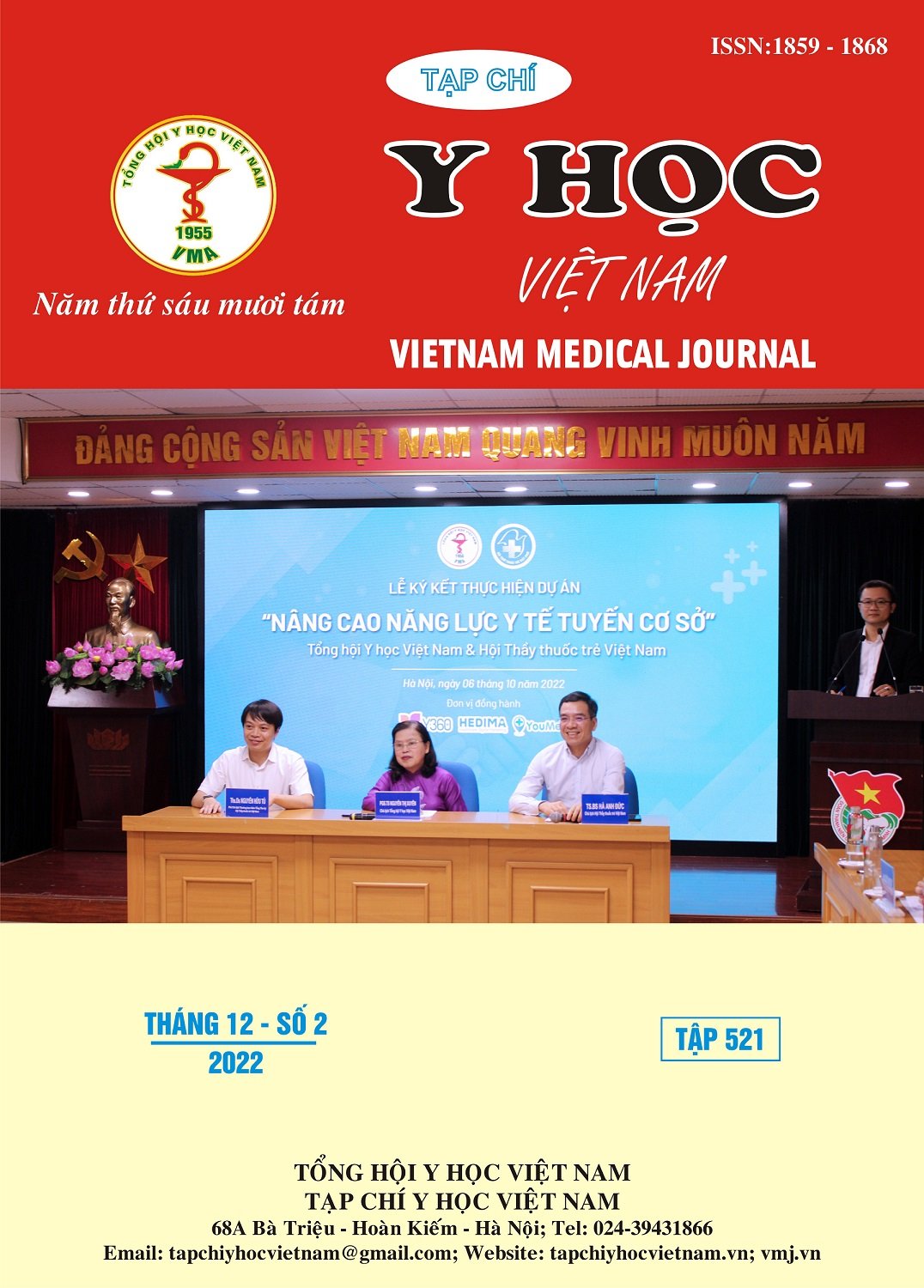CLINICAL FEATURES OF PEMPHIGOID PATIENTS AT THE NATIONAL HOSPITAL OF DERMATOLOGY AND VENEREOLOGY IN 2021-2022
Main Article Content
Abstract
Bullous Pemphigoid accounts for the highest proportion of autoimmune subepidermal bullous diseases. In Vietnam, the prevalence of Pemphigoid in the total number of autoimmune bullous diseases is 9.9%. This disease needs to be detected early and treated promptly, in order to minimize the rate of complications, morbidity and mortality. A cross-sectional study was conducted to describe the clinical characteristics of Pemphigoid patients at the National Hospital of Dermatology and Venereology in 2021-2022. 42 newly diagnosed patients enrolled in the study. The results indicated that average age of of the patients was 73.21 ± 12.93. Age group 70-89 years old accounted for the largest proportion (42.9%). 97.6% of patients only had skin lesions. The extremities and flexural regions are the common sites of lesion onset (54.8%). Pemphigoid patients had a relatively high prevalence of diabetes and neuropathy co-morbidities (33.3% and 23.8%, respectively).
Article Details
Keywords
Pemphigoid, clinical, co-morbidities
References
2. Trần Hậu Khang. Bệnh da bọng nước tự miễn. In: Bệnh Học Da Liễu. Nhà xuất bản Y học; 2019.
3. Nguyễn Văn Thường. Bệnh bọng nước tự miễn. In: Hình Ảnh Lâm Sàng, Chẩn Đoán và Điều Trị Trong Chuyên Ngành Da Liễu. Vol 1. Nhà xuất bản Y học; 2019.
4. Brick KE, Weaver CH, Lohse CM, et al. Incidence of bullous pemphigoid and mortality of patients with bullous pemphigoid in Olmsted County, Minnesota, 1960 through 2009. Journal of the American Academy of Dermatology. 2014;71(1):92-99. doi:10.1016/j.jaad.2014.02.030
5. Hübner F, Recke A, Zillikens D, Linder R, Schmidt E. Prevalence and Age Distribution of Pemphigus and Pemphigoid Diseases in Germany. Journal of Investigative Dermatology. 2016;136(12):2495-2498. doi:10.1016/j.jid.2016.07.013
6. Ben Mordehai Y, Faibish H, Astman N, Greenberger S, Barzilai A, Baum S. Characteristics of patients with bullous pemphigoid: comparison of classic bullous pemphigoid to non‐bullous pemphigoid. J Eur Acad Dermatol Venereol. 2020;34(1):161-165. doi:10.1111/jdv.15883
7. Kridin K, Ludwig RJ. The Growing Incidence of Bullous Pemphigoid: Overview and Potential Explanations. Front Med. 2018;5:220. doi:10.3389/fmed.2018.00220
8. Bastuji-Garin S, Joly P, Lemordant P, et al. Risk Factors for Bullous Pemphigoid in the Elderly: A Prospective Case–Control Study. Journal of Investigative Dermatology. 2011;131(3):637-643. doi:10.1038/jid.2010.301
9. Lambadiari V, Kountouri A, Kousathana F, et al. The association of bullous pemphigoid with dipeptidyl-peptidase 4 inhibitors: a ten-year prospective observational study. BMC Endocr Disord. 2021;21(1):23. doi:10.1186/s12902-021-00689-7


